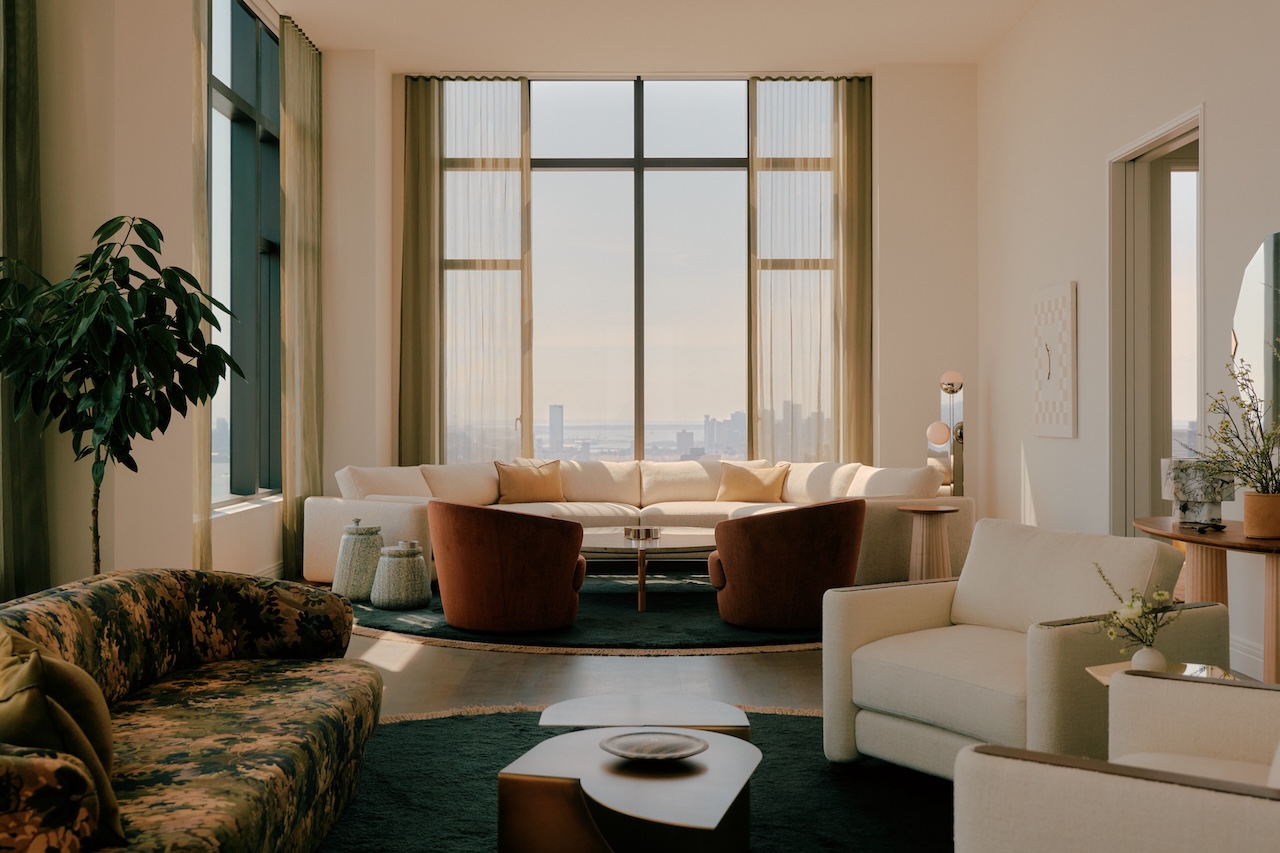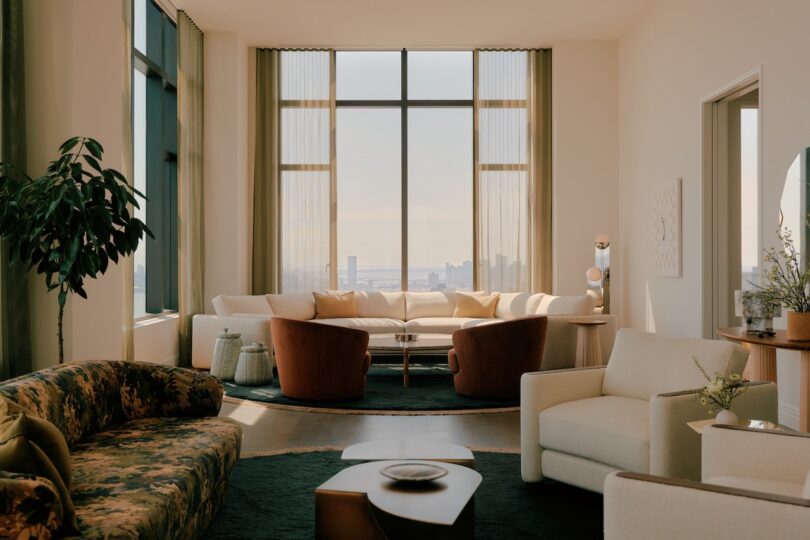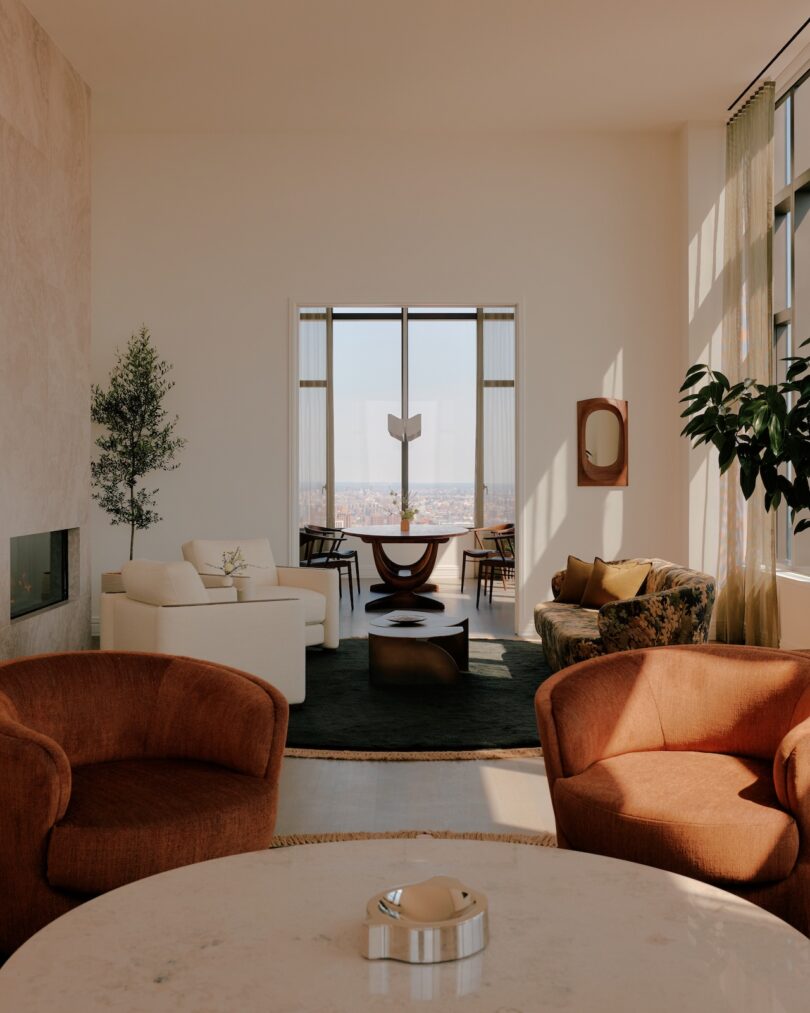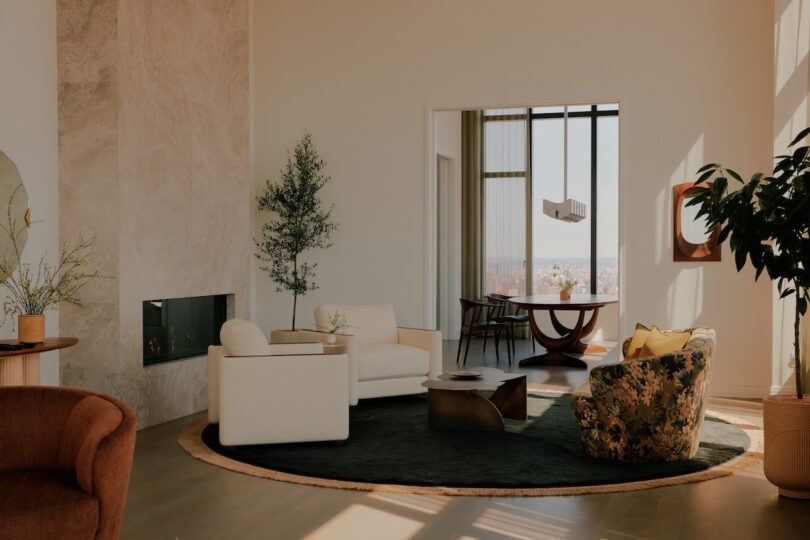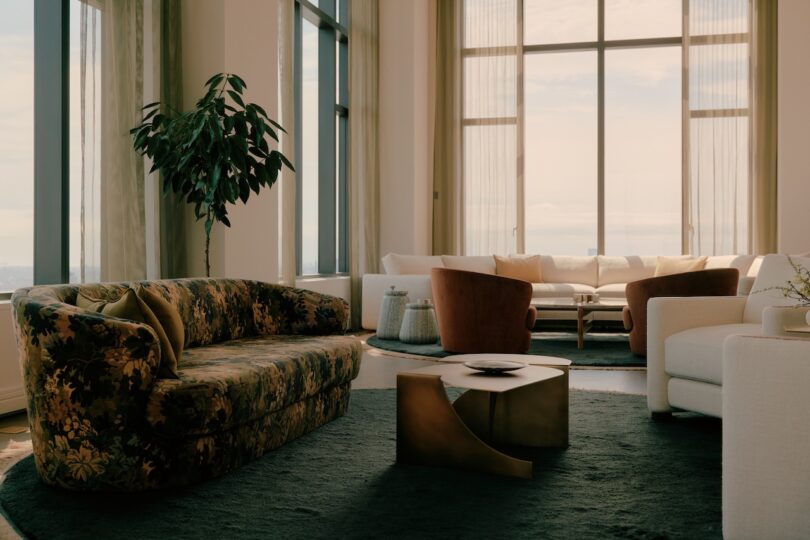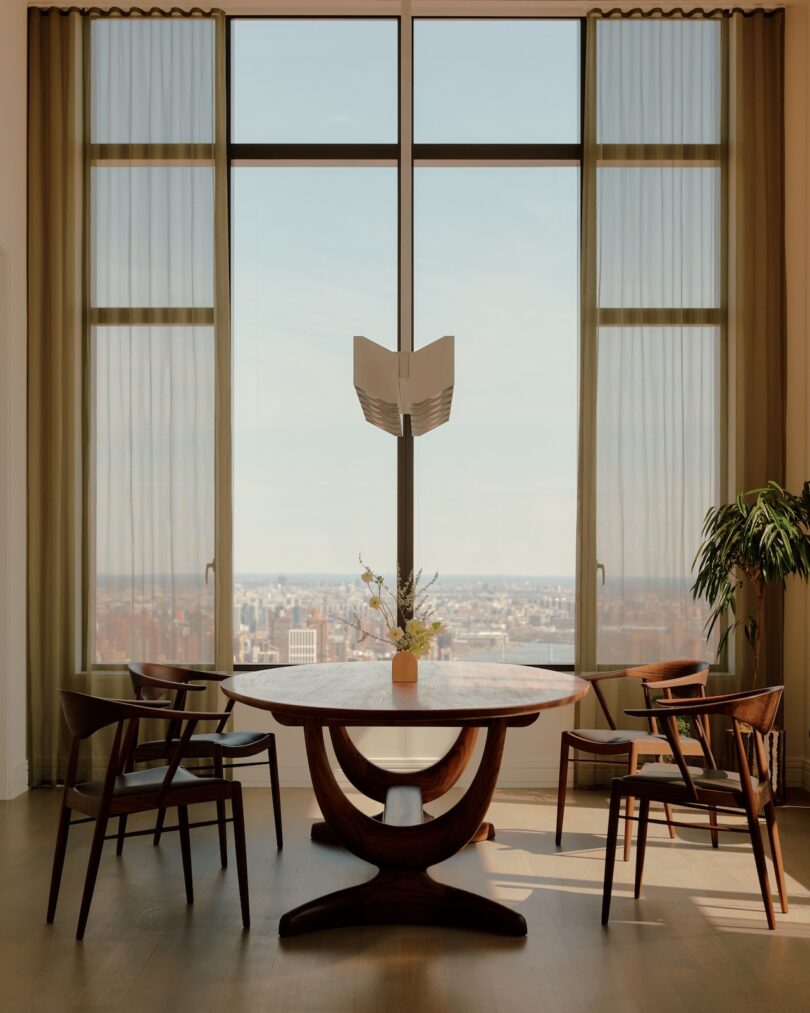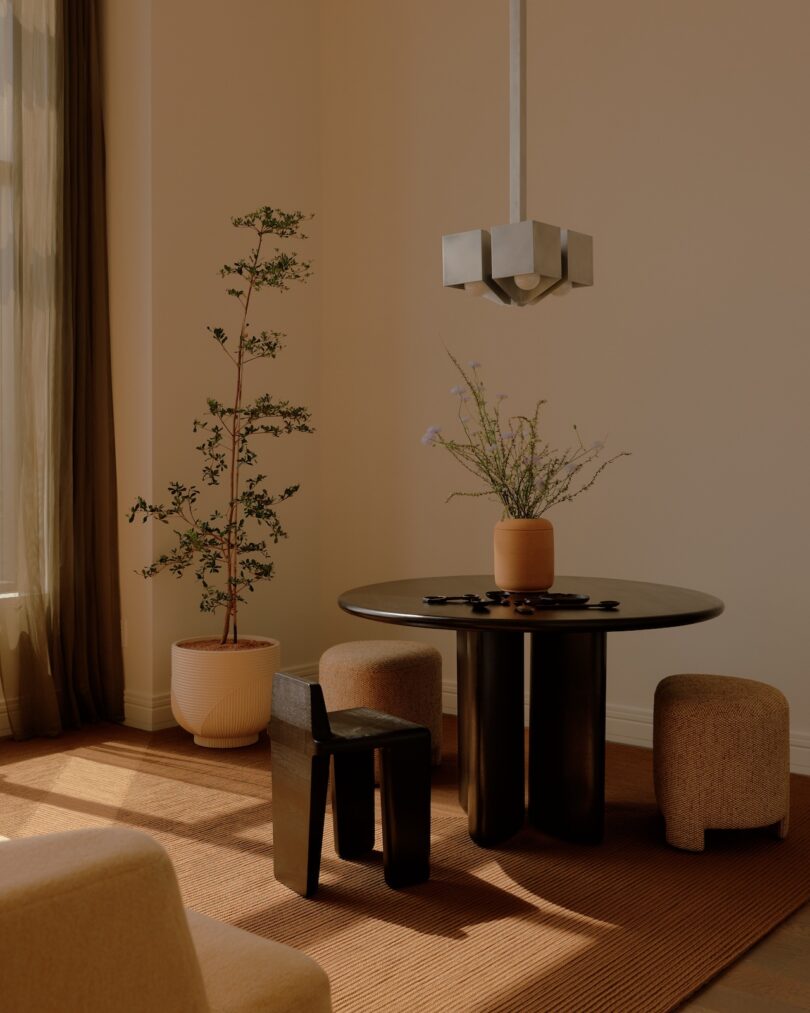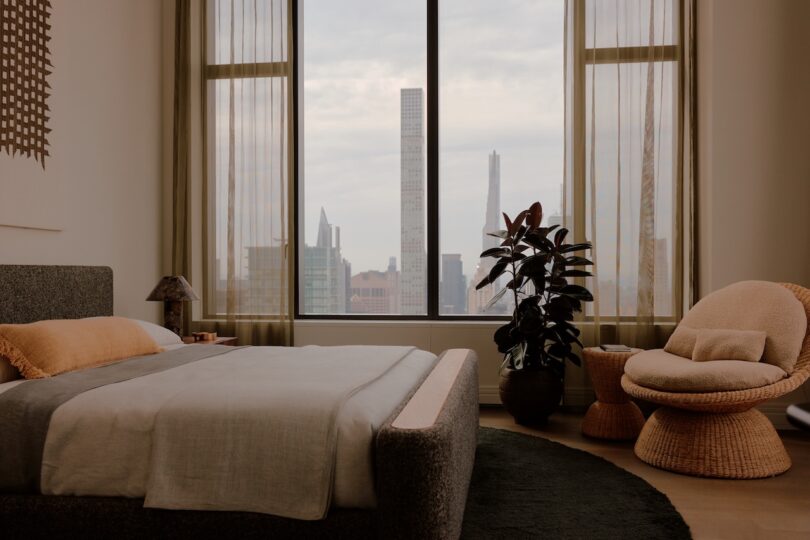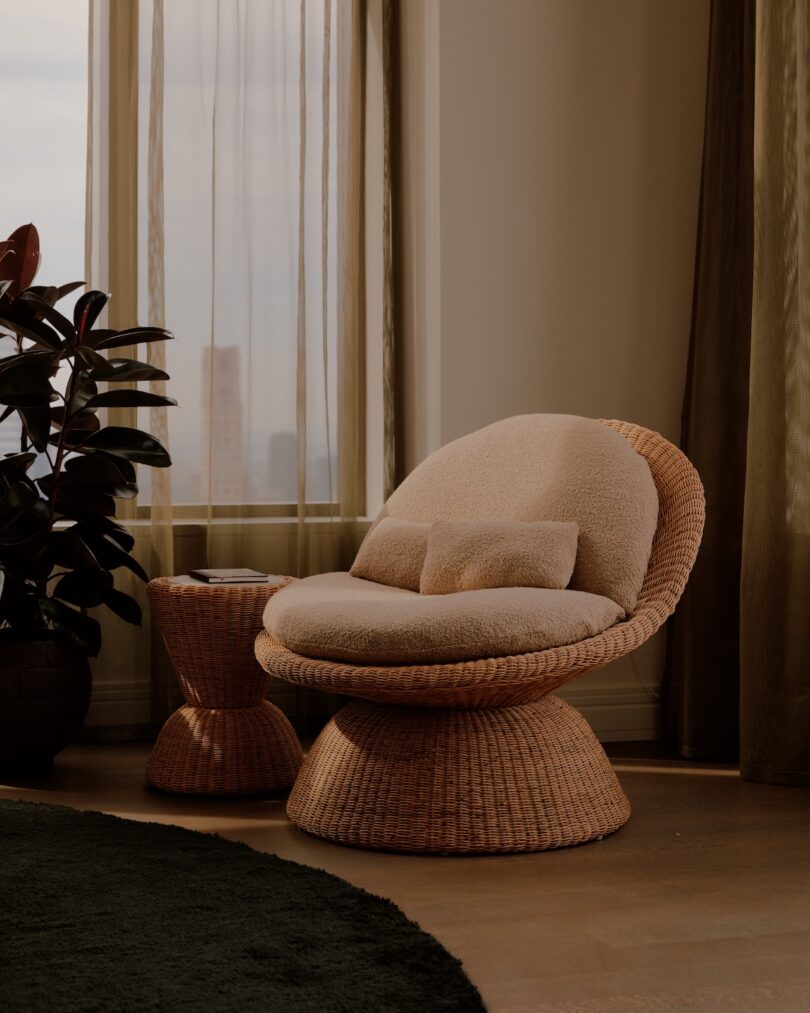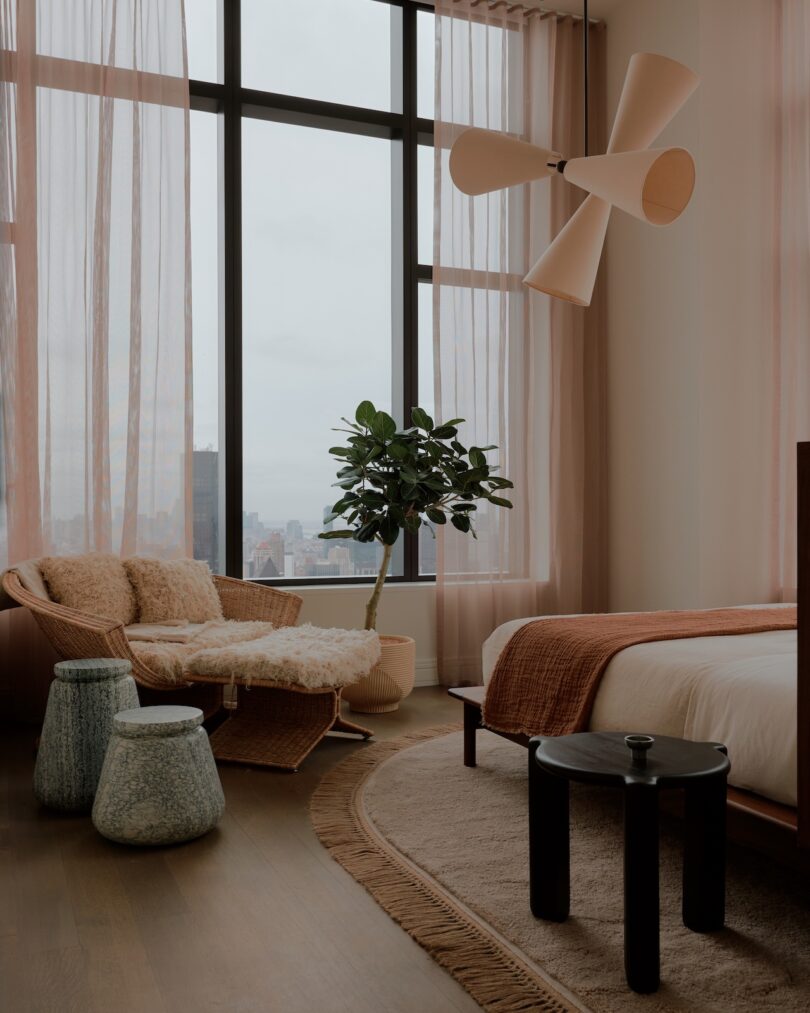Susan Clark, whose singular vision for Radnor has reshaped the landscape of contemporary design curation, stands at the threshold of the gallery’s most ambitious chapter yet – Evolution in Form – a sun-drenched penthouse perched 70 floors above Manhattan within the soaring Sutton Tower. Her influence on how we experience design in residential contexts has been transformative, creating dialogue between object and space that transcends traditional gallery paradigms.
The transition from previous locations to this light-filled, 5,000-square-foot penthouse marks more than a change of address. It represents a conceptual shift in Clark’s approach to presenting contemporary design. She has deliberately embraced a cleaner, more minimalist aesthetic that responds to the architectural vocabulary of Thomas Juul-Hansen’s residential tower – now the tallest on Manhattan’s East Side at 850 feet.
“I’m delighted to open our newest location at Sutton Tower with this new collection of works,” states Susan Clark. “In many ways, Evolution in Form reflects not only our exploration of new creative horizons with our designers, but also our desire to create an evolving dialogue between design and architecture. The spaces we show in give us specific problems to solve, and specific potential to fulfill. It’s a more meaningful exercise for designers, and a more relevant way to show designs. At Sutton Tower, the collection’s exploration of soft, textured materiality and authentic, personal design language comes into a new focus.”
The light spills across the unvarnished surface of Toshio Tokunaga’s newest dining table, catching in the shallow ripples of hand-planed Japanese Zelkova wood. This 350-year-old timber, touched only by traditional Kanna techniques rather than modern machinery, holds centuries of growth within its grain.
The exhibition’s centerpiece, Sebastian Cox’s Sendal collection, stands as a powerful testament to the potential of regenerative design practices. Cox, whose work exclusively uses wild-sourced British wood and natural finishes, has created pieces that hover between substantiality and lightness. The collection’s armoire, credenza, and console table feature an undercut base that creates a floating effect, reducing the visual weight of even the most massive forms.
Evolution in Form brings together work that explores the tension between tradition and innovation across materials and techniques. The collection most notably includes Radnor’s first venture into outdoor furniture – the Pausa sofa collection by longtime collaborators Bunn Studio. These sculptural rattan pieces with their generous proportions and enveloping forms connect historical craft traditions with contemporary sensibilities.
For more information on Radnor’s Evolution in Form, visit radnor.co.
Photography by William Jess Laird.
